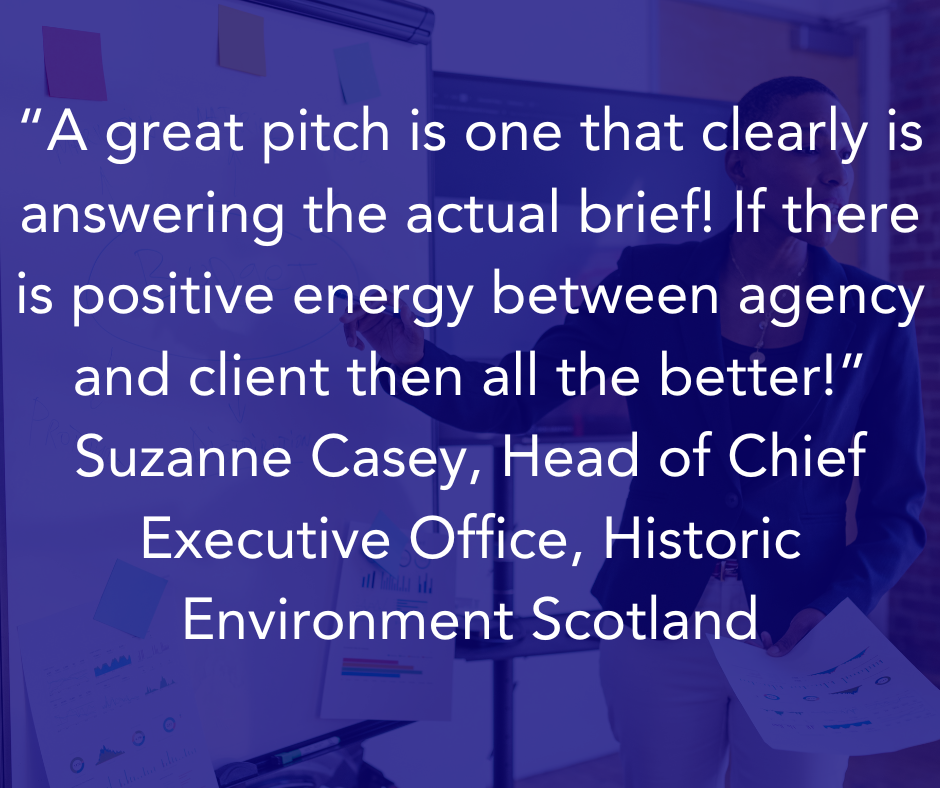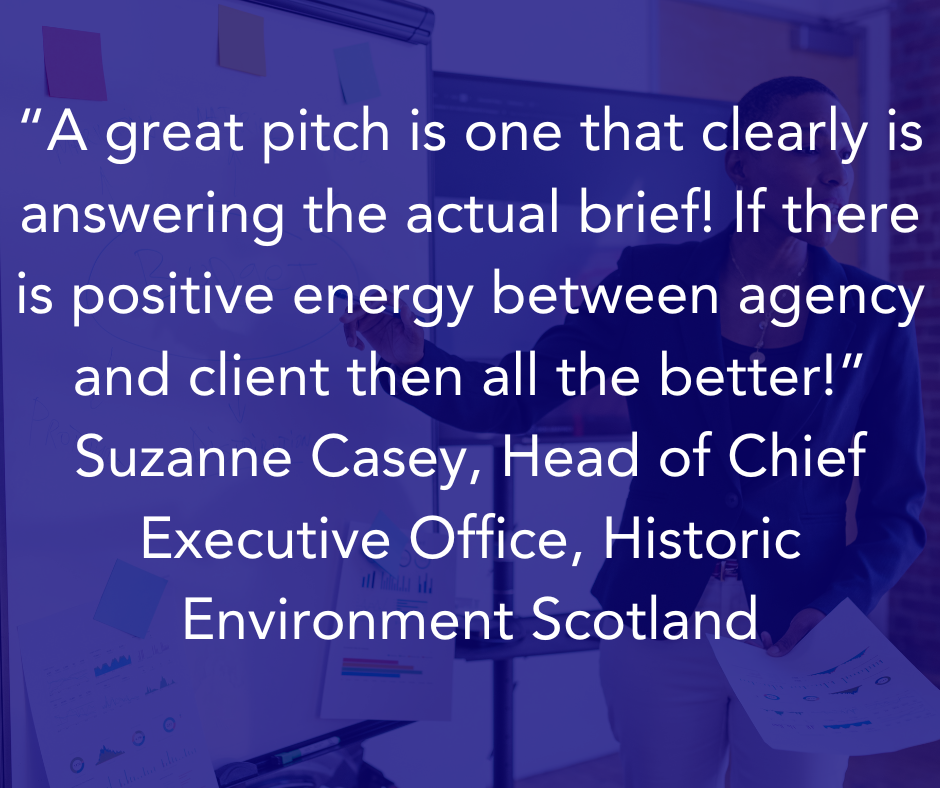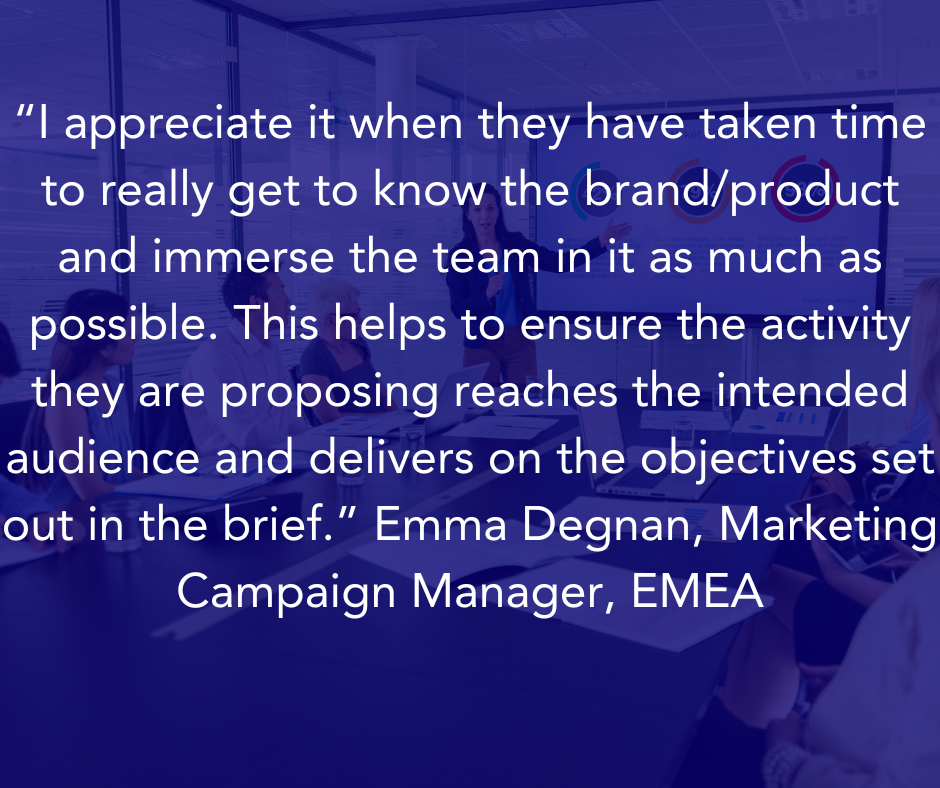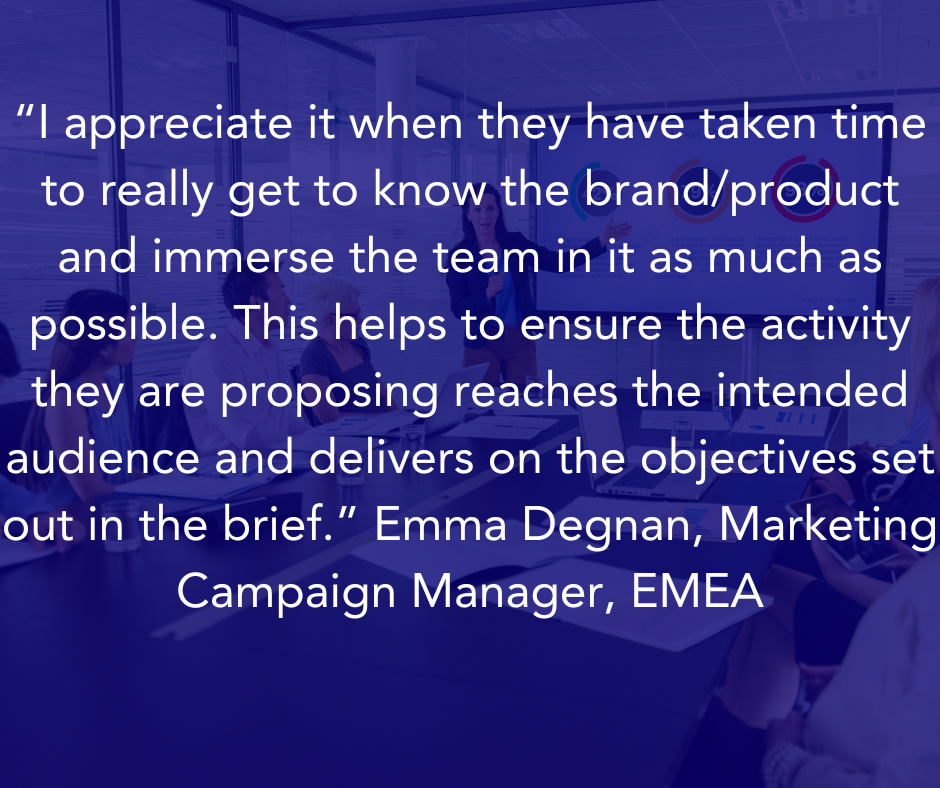Delivering pitches is something that can be nerve-wracking no matter what stage of your career you’re at. Whether you’re trying to win a client, presenting a new way of working to your colleagues, or having to present an idea as part of a job interview, having a plan is so important.
These tips were originally pulled together to help post-graduate students who were taking part in The Challenge: however, we felt they were also applicable for people at all stages.
What is a pitch?
A pitch is a ‘proposal’, where you set our your idea in a persuasive way to convince the audience to agree with you and take your idea forward.
You want to educate others about your idea and why it will work, getting others to advocate for your idea.
Sometimes pitches can be just written and sent across, but often they involve you talking through your pitch face to face. A lot of the time in marketing, pitches are created in PowerPoint.
One thing is for sure: it you’re planning a career in marketing you won’t be able to avoid pitching, in some form or another. Don’t panic though: it’s not like it appears on Dragon’s Den!
What is a PowerPoint deck?
In marketing, you’ll often hear people talking about making a ‘pitch deck’, a ‘slide deck’ or a ‘PowerPoint deck’. But what actually is a slide deck – and why is this term used to describe a presentation?
Before laptops were commonplace, presentations were made using projectors, including a carousel slide projector. These machines allowed people to insert about 80 slides, normally of a photo, to make a slideshow. A group of slides was called a deck – so the name slide deck came about.
As technology changed, PowerPoint and other presentation tools became the norm, but the term PowerPoint deck became used: with each slide in a PowerPoint presentation making up the deck.
If you hear people talking about a pitch deck or a PowerPoint deck, they really just mean a visual presentation.
What are the key components of a pitch?
There are several key components that each pitch should include:
- Explain who you are: What your experience is and why they should listen to you
- What’s the brief: Play back the brief to show you understand what you’ve been asked
- Show how you understand the target audience: As well as basic things like age and demographics, consider what interests them, what motivates them and what type of content they are likely to engage with
- Show your solution: Explain how you would ‘solve’ their problem and help them reach their goals. Show what it would look like and back it up with evidence
- Show you understand the wider context: Make clear that you have researched the company and know what is going on in the industry, looking at what is working for them and competitors
- Recap and give next steps: Give a round-up of the points that you’ve made and tell your audience the next steps
Different people may have different orders to include these in: some like to start with the solution first, then ‘loop’ back round to who they are and the brief, others like to use the order given. However, as long as you cover all of these points (and end with the recap!) it’s up to you and how you think flows best for your pitch.
Eight top tips for creating a great pitch presentation
Tip 1: Answer the brief
It’s easy to get carried away with a brief and focus on what you’re interested in: but make sure you answer the brief itself and cover everything it has discussed.
This shows that you’ve fully read and digested what they asked for: including format of presentation, the length of the presentation (if they give you 30 minutes, make sure you can present your whole pitch in that time!) and, of course, mentioning all the areas of marketing they asked you to cover.
If possible, do a run through beforehand with someone else, giving them the brief. They can see if you hit all the key points.

Tip 2: Plan in advance
If you’ve been in the industry for a while, you might be able to pull a pitch together on a train while heading to the meeting itself…but it is always better to be prepared!
The best pitches are succinct, straight forward and easy to digest. Think about the aim of your presentation, and make sure that every slide in it has a purpose.
It’s also important to work out a cohesive thought process: you don’t want to be jumping wildly from one point to another, but rather take a logical path that connects everything together. While a rushed presentation might hit on all the key points you need in a pitch, it’s the planning and preparation that will make sure it runs smoothy.
Tip 3: Know your audience
If you’re presenting your pitch, its good to know a bit about who you will be speaking to. If you’re talking to people in the industry, you can go into more depth about the subject, but if it is people who don’t normally deal with marketing, you may need to take it a little bit slower and explain what certain acronyms mean.
Having that brief overview in advance of what they do and the areas of interest to them can help you prepare…but we’ll come back to this more in tip 8.
Tip 4: Tell a compelling story
Our brains can easily wander off…but if you tell a story, more parts of our brain engage. We sit up and listen.
It can be a bit of a challenge to tell a story in a short period of time, but if you can work one into your pitch it has a lot more impact. There are various ways you can do this: by being relatable, solving a problem (like slaying a dragon but with marketing) or giving a big idea that instantly compels them.


 Tip 5: Keep it simple
Tip 5: Keep it simple
In the infamous words of Kevin from The Office: “Why waste time say lot word when few word do trick?”
Ok, maybe not that short, but if you are presenting your pitch, try to make sure that your slides are not too text heavy, and are simple to understand. This is because when you are presenting, the people you’re pitching to will be looking at your slides. And if those slides have paragraphs of text, they’ll be too busy reading that to listen to what you say.
Ideally, you’ll have a few short bullet points or just a sentence or two on each slide, which you can then talk around in more detail. If a picture or a graph can make your point a lot better than you can write it – use that image instead!
Housekeeping is something is also easily forgotten in pitches, especially if various people are working on the same presentation: make sure your slides are relevant, well-organised, and that they use the same font and design template throughout.
Tip 6: Know your stuff
So, you’ve presenting a brilliant campaign idea as part of your pitch. Make sure that the people you are presenting to know JUST how brilliant it is.
Explain what it is you’re basing the recommendation on: does it come from research? Their current sales pattern? What people are saying on social media?
This could be anything, and that planning stage will help you add that wow factor.
For example, you might remember the Old Spice ‘The man your man could smell like’ ad campaign from 2010. Did you know this whole campaign was driven by a single insight: that 60% of body wash purchases are made by women. Ad agency Wieden + Kennedy therefore pitched the idea that Old Spice shouldn’t be creating an ad targeted to men, but to women. In the end, this campaign doubled sales.
This just goes to show that having research to show WHY your idea is great can help elevate your pitch.

Tip 7: Practice speaking in public
From sweaty palms to blank minds, some of us feel out of our comfort zone speaking in public. However, it does get easier the more you do it.
If you’ve prepared in advance and know your subject, that’s half the battle. On the other hand, it is possible to over prepare. You don’t want to sound like you’re reading from a script (and if you have full paragraphs written on slides it can be very easy to fall into the trap of just reading what’s on the page).
Try seeing how other people present: this could anyone from someone you work with to a great public speaker like Barack Obama. The best public speakers have a rhythm to how they speak. They pause after they make an important point, so those listening can absorb what was said. They look at people in the audience and make eye contact instead of just staring at their notes. If you’re making an exciting point, show that with your voice – the last thing you want is a monotonous pace.
If you’re worried, its also very easy to speak a lot faster than you normally would, to rush through it. Taking those pauses, and stopping to make eye contact, can help bring you back on track.
Tip 8: Appreciate the Q&A
During or after most pitches, the people you are speaking to will have some questions.
Here is where you really get to engage with your audience, this is a vital part of the pitch and it’s something that you should think about in advance.
While it is not a ‘them v us’ that you should get defensive about, it is worth considering if there are any particular areas you think might come up, and have rough answers in mind. If you know who will be in the room, this could give you insight into the type of areas they might focus on: for example, a sales director may be interested in how many sales you’d get, while a finance director may be more likely to ask about costings.
Actively listen to what you’re asked and if you do not have an answer at the time, it’s okay to say that you’d need to look into that and get back to them as soon as possible. Honestly is far better than making something up!
Hopefully, this guide has helped you to understand a bit more about what pitches are, how to create them, and the key steps you need to perfect your pitch.


